Fairy Wings Epimedium acuminatum

ABOUT
The plant known as Epimedium acuminatum, often referred to by its common name Bishop's Hat, is notable for its distinctive foliage and flowers. The leaves are usually composed of three leaflets and can change color throughout the seasons, turning from a green to a bronze-red, especially during autumn or in colder conditions, adding a touch of color to the garden. The most striking feature of Bishop's Hat are its flowers, which are delicate and intricate. These blossoms are typically a light to brilliant shade of yellow, violet, or blue, and they often display a spurred petal structure, looking somewhat like a small hat or a fairy's wing, hence the common name. The flowers are arrayed in loose, open sprays and can provide a cloud of color in the springtime when the plant is in full bloom. Overall, the charm of Bishop's Hat lies in its decorative foliage that can provide ground cover, as well as in its enchanting, lightly nodding flowers that add a whimsical touch to shade gardens. The plant is frequently chosen for its ability to thrive in the dappled light under trees or in other semi-shaded areas where it can form a lush undergrowth that remains attractive over multiple seasons.
About this plant
 Names
NamesFamily
Berberidaceae
Synonyms
Fairy Wings, Horny Goat Weed, Bishop's Hat, Barrenwort
Common names
Epimedium alpinum var. acuminatum, Epimedium diphyllum var. acuminatum, Epimedium enneaphyllum var. acuminatum.
 Toxicity
ToxicityTo humans
Epimedium acuminatum, commonly known as Fairy Wings, is not generally considered toxic to humans. There is limited information available about the toxicity of Epimedium species to humans, and they are often used in traditional medicine. However, consuming large amounts of any non-food plant carries a risk of negative side effects, and it is always advisable to exercise caution and consult a healthcare provider before ingesting plants that are not commonly recognized as food.
To pets
Fairy Wings, or Epimedium acuminatum, does not appear on the lists of common toxic plants for pets provided by organizations like the ASPCA (American Society for the Prevention of Cruelty to Animals). Therefore, it is generally considered non-toxic to both cats and dogs. However, individual animals might have different sensitivities, and the ingestion of plant material can sometimes cause mild stomach upset in pets. If you suspect your pet has consumed a large amount of any plant and is showing signs of distress, it is best to consult a veterinarian.
 Characteristics
CharacteristicsLife cycle
Perennials
Foliage type
Deciduous
Color of leaves
Green
Flower color
Yellow
Height
1-2 feet (30-60 cm)
Spread
1-2 feet (30-60 cm)
Plant type
Herb
Hardiness zones
5
Native area
China
Benefits
 General Benefits
General Benefits- Ornamental Appeal: Epimedium acuminatum, also known as Fairy Wings, has attractive foliage and delicate flowers that add aesthetic value to gardens and landscapes.
- Drought Tolerance: Once established, Fairy Wings are quite drought-tolerant, making them suitable for gardens with lower water availability.
- Ground Cover: Fairy Wings can serve as an effective ground cover due to its spreading habit, helping to suppress weeds and reduce soil erosion.
- Shade Tolerance: This plant is well-suited for shaded areas where other plants might struggle to grow, providing color and texture in low-light conditions.
- Low Maintenance: Fairy Wings require minimal care once established, making them a good choice for gardeners looking for low-maintenance plants.
- Wildlife Support: The flowers of Epimedium acuminatum can attract pollinators such as bees and butterflies, contributing to the health of the local ecosystem.
- Seasonal Interest: With its changing foliage color and spring blooms, Fairy Wings provide visual interest throughout multiple seasons.
 Medical Properties
Medical Properties- Libido enhancement: Epimedium acuminatum, commonly known as Horny Goat Weed, is traditionally used to improve sexual function and libido.
- Osteoporosis treatment: Compounds present in the plant have been studied for their potential effects on bone health, specifically in the prevention and treatment of osteoporosis.
- Erectile dysfunction relief: It has been used in traditional medicine as a natural remedy for erectile dysfunction.
- Anti-inflammatory effects: The plant contains various flavonoids that are thought to have anti-inflammatory properties.
- Antioxidant activity: Epimedium acuminatum may possess antioxidant components which could help in reducing oxidative stress within the body.
- Neuroprotective effects: Some research suggests potential neuroprotective benefits, which could aid in the prevention of certain neurological disorders.
- Immunomodulatory potential: There might be components within the plant that can modulate the immune system, though these effects require further scientific validation.
- Cardiovascular health: There is some evidence to suggest it may have beneficial effects on cardiovascular health.
- Endocrine function: The plant may influence endocrine function, impacting hormone levels and regulation.
 Air-purifying Qualities
Air-purifying QualitiesThis plant is not specifically known for air purifying qualities.
 Other Uses
Other Uses- Ground cover: Epimedium acuminatum, also known as Horny Goat Weed, can be planted as a ground cover in shaded garden areas where its foliage creates an aesthetic carpet that suppresses weeds.
- Drought-resistant landscaping: Due to its ability to withstand dry conditions once established, it can be used in xeriscaping (gardening that reduces or eliminates the need for supplementary water).
- Shade gardens: Its tolerance for low light makes it a suitable choice for adding greenery beneath canopy trees or in shaded corners of a garden.
- Erosion control: Its root structure helps stabilize soil on slopes or areas prone to erosion.
- Ornamental uses: While not in flower, the heart-shaped leaves of Horny Goat Weed offer textural interest in ornamental garden designs.
- Wildlife habitat: Its dense growth can provide shelter for small wildlife, such as beneficial insects and ground-nesting birds.
- Edging plants: Epimedium acuminatum can be used to create natural-looking edges along paths or between different sections of a garden.
- Container gardens: It can be grown in containers where space is limited, such as on balconies or patios, adding greenery to urban environments.
- Fall color: The leaves of the Epimedium acuminatum can change color in Autumn, adding seasonal interest to the garden landscape.
- Companion planting: It can be used alongside other shade-loving plants to create a diverse understory in forested garden settings.
Interesting Facts
 Feng Shui
Feng ShuiThe plant Epimedium, commonly known as Horny Goat Weed, is not used in Feng Shui practice.
 Zodiac Sign Compitability
Zodiac Sign CompitabilityThe plant Epimedium, commonly known as Horny Goat Weed, is not used in astrology practice.
 Plant Symbolism
Plant Symbolism- Longevity: The Epimedium acuminatum, commonly known as the Fairy Wings, is often associated with longevity due to its capacity to thrive in harsh conditions and return each spring after winter dormancy.
- Sexual Vitality: As a traditional herbal remedy, Fairy Wings are used in Chinese medicine to enhance libido and sexual function, symbolizing virility and reproductive health.
- Fortitude: The tenacity of Fairy Wings to spread and cover ground in the garden represents resilience and the ability to overcome adversity.
 Water
WaterThe Horny Goat Weed should be watered regularly during its growing season, which is spring and fall, to maintain moist but not waterlogged soil. It is generally recommended to provide about one inch of water per week, depending on the weather conditions and soil drainage. During the hot summer months, watering frequency may need to increase, especially if there are extended periods of dry weather. Conversely, reduce watering in the winter when the plant is dormant. A weekly check of the soil's moisture can guide you on whether additional water is needed or not; the goal is to keep the soil consistently damp.
 Light
LightHorny Goat Weed prefers partial shade to full shade conditions, thriving best in a spot that is sheltered from the harsh afternoon sun. The ideal lighting is dappled sunlight or light shade under deciduous trees where the plant receives bright indirect light without the intensity of direct sun. It can also do well in a north-facing garden spot that receives some morning sun but remains shaded for the rest of the day.
 Temperature
TemperatureHorny Goat Weed is hardy and can survive in a range of temperatures, but it thrives best in temperatures between 50°F and 75°F. It can tolerate a minimum temperature down to around 5°F for short periods, but prolonged exposure to temperatures below this can damage the plant. The ideal temperature conditions are moderate, avoiding extremes of heat or cold, to ensure healthy growth.
 Pruning
PruningPruning Horny Goat Weed is beneficial to remove any dead or damaged foliage and to maintain a tidy appearance. Prune in late winter or early spring before new growth starts, which will also allow for better air circulation and light penetration to the new emerging leaves. Pruning is typically done annually, and the best time is when the plant is still dormant.
 Cleaning
CleaningAs needed
 Soil
SoilThe Bishop's Hat prefers well-drained, humus-rich soil with a pH ranging from 6.0 to 7.5. A mix of equal parts garden soil, peat, and perlite or pine bark can provide the necessary drainage and nutrient content. Adding compost or leaf mold can enhance the organic matter, benefiting the plant's growth.
 Repotting
RepottingThe Bishop's Hat should be repotted every two to three years to refresh the soil and accommodate root growth. Spring is the ideal time for repotting to allow the plant to establish before the growing season.
 Humidity & Misting
Humidity & MistingThe Bishop's Hat thrives in moderate to high humidity; however, it is adaptable to average home humidity levels. To maintain plant health, aim for a humidity level between 40% and 60%.
 Suitable locations
Suitable locationsIndoor
Place Bishop's Hat in bright, indirect light indoors.
Outdoor
Plant Bishop's Hat in shade or part-sun outdoors.
Hardiness zone
5-9 USDA
 Life cycle
Life cycleEpimedium acuminatum, commonly known as Fairy Wings or Horny Goat Weed, begins its life cycle as a seed that germinates in moist, well-draining soil, partially shaded from direct sunlight. Upon germination, the seedling emerges and establishes a small rosette of heart-shaped leaves close to the ground. As it matures, the plant develops a robust rhizome system underground, which allows it to spread and produces multiple clumps of foliage. In spring, the mature plant sends up flowering stalks with delicate, spurred flowers that range in color from yellow to purple, depending on the variety. After pollination, typically by bees or other insects, the plant produces dry, capsule-like fruits that release seeds, completing the reproductive cycle. During winter, the plant enters a period of dormancy, with the foliage dying back in colder climates, but it regenerates from the rhizomes with the arrival of warmer spring temperatures.
 Propogation
PropogationPropogation time
Spring to early summer
Propogation: Epimedium acuminatum, commonly known as Fairy Wings or Bishop's Hat, is best propagated by division. This is most successfully done in late summer to early fall, after the flowering period has ended and the plant starts to go dormant. You'll want to dig up the clump of Epimedium, taking care not to damage the roots too much. Using a sharp spade or knife, divide the clump into smaller sections, ensuring each section has a good root system and several growth points. Replant these divisions, spaced about 12 to 15 inches (30 to 38 centimeters) apart, at the same depth they were originally growing. Water them well to help establish the roots and maintain even moisture until the plant is established. This method of propagation not only helps to create more plants but also rejuvenates older clumps that may have become woody in the center.

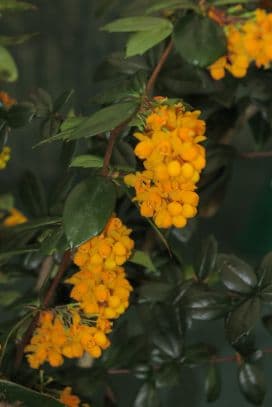
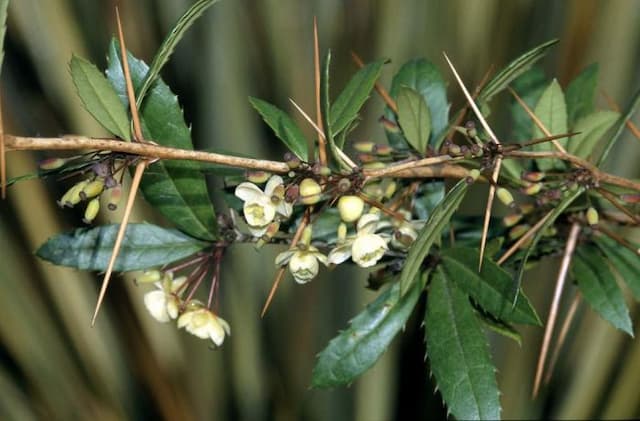
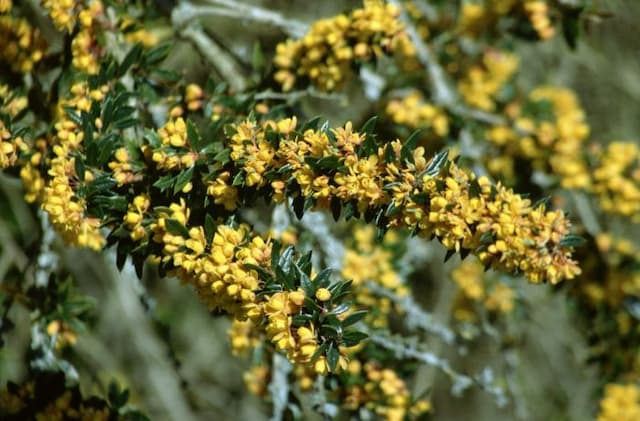
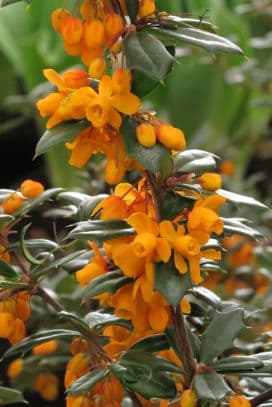
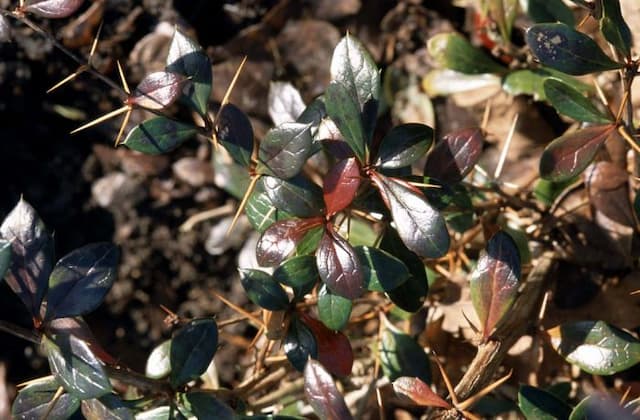


![Japanese barberry [Bonanza Gold]](/_next/image?url=https%3A%2F%2Fplants-admin.emdemapps.com%2Fimages%2Fplants%2F%2Fimages%2F604b5385e413f.png&w=640&q=75)
